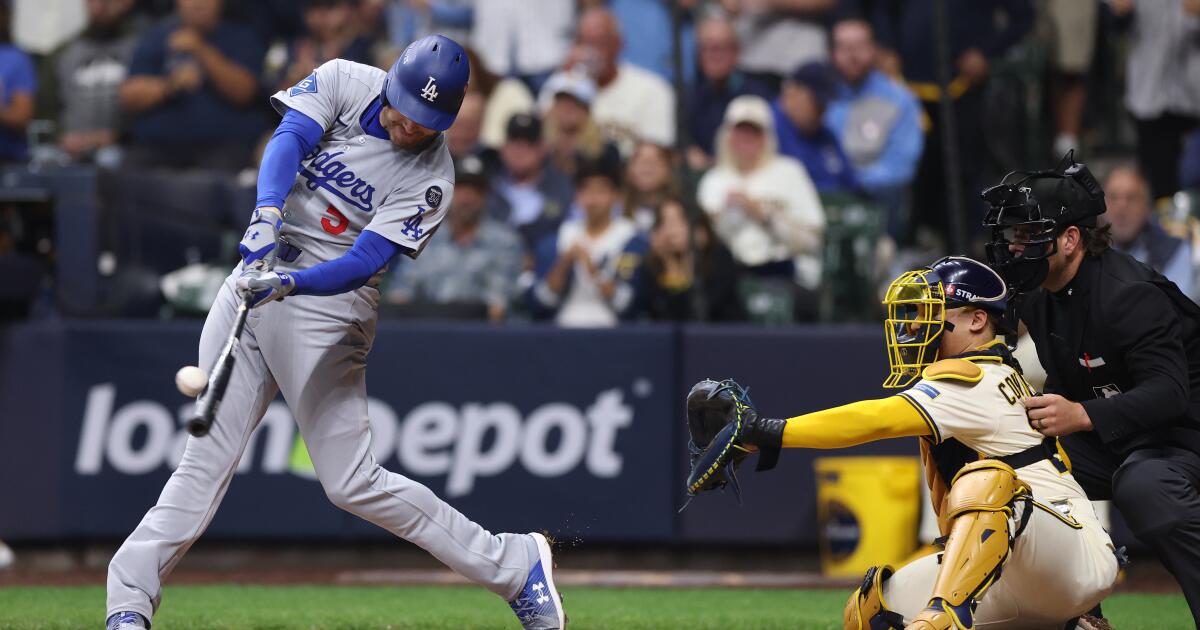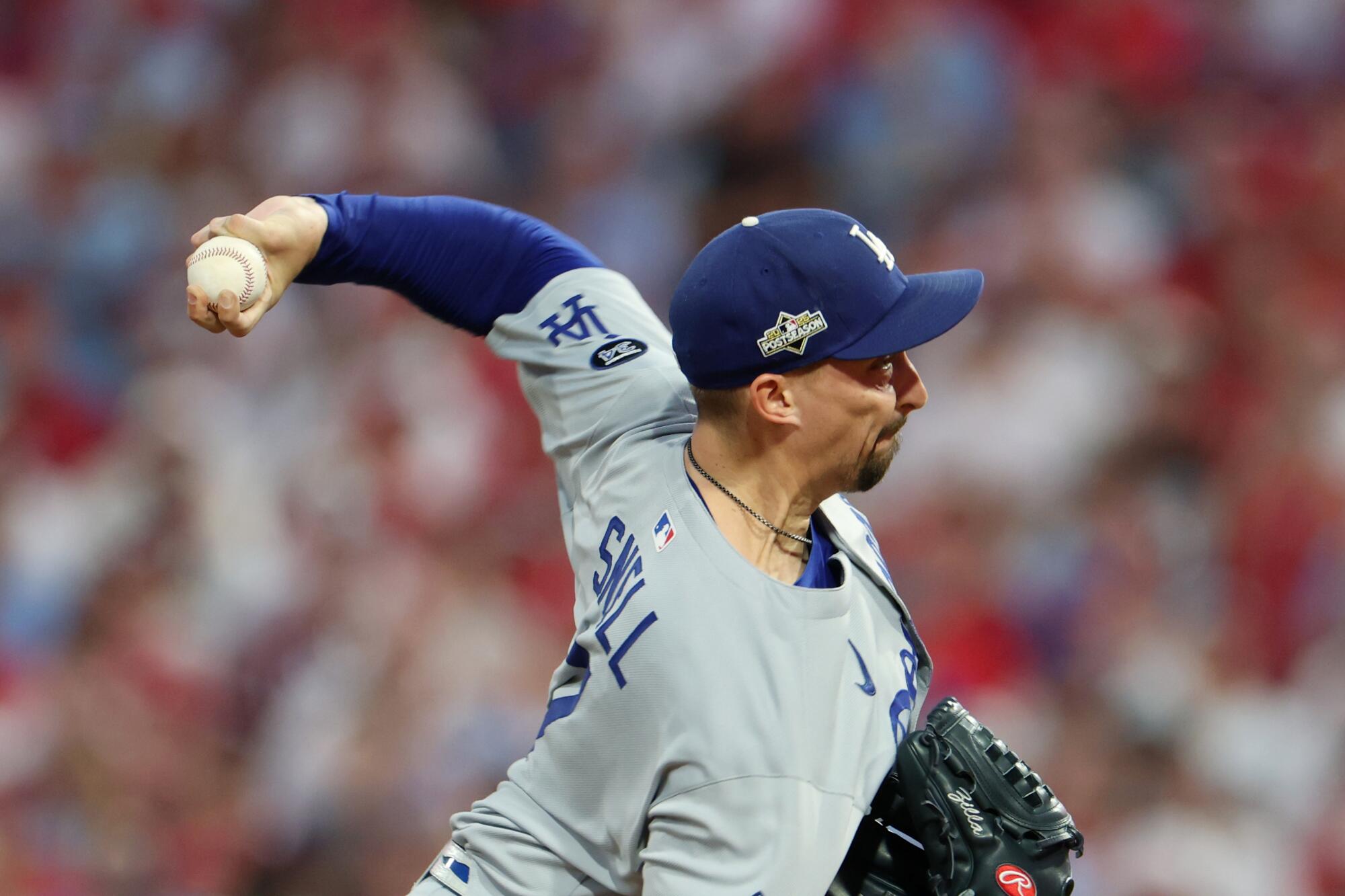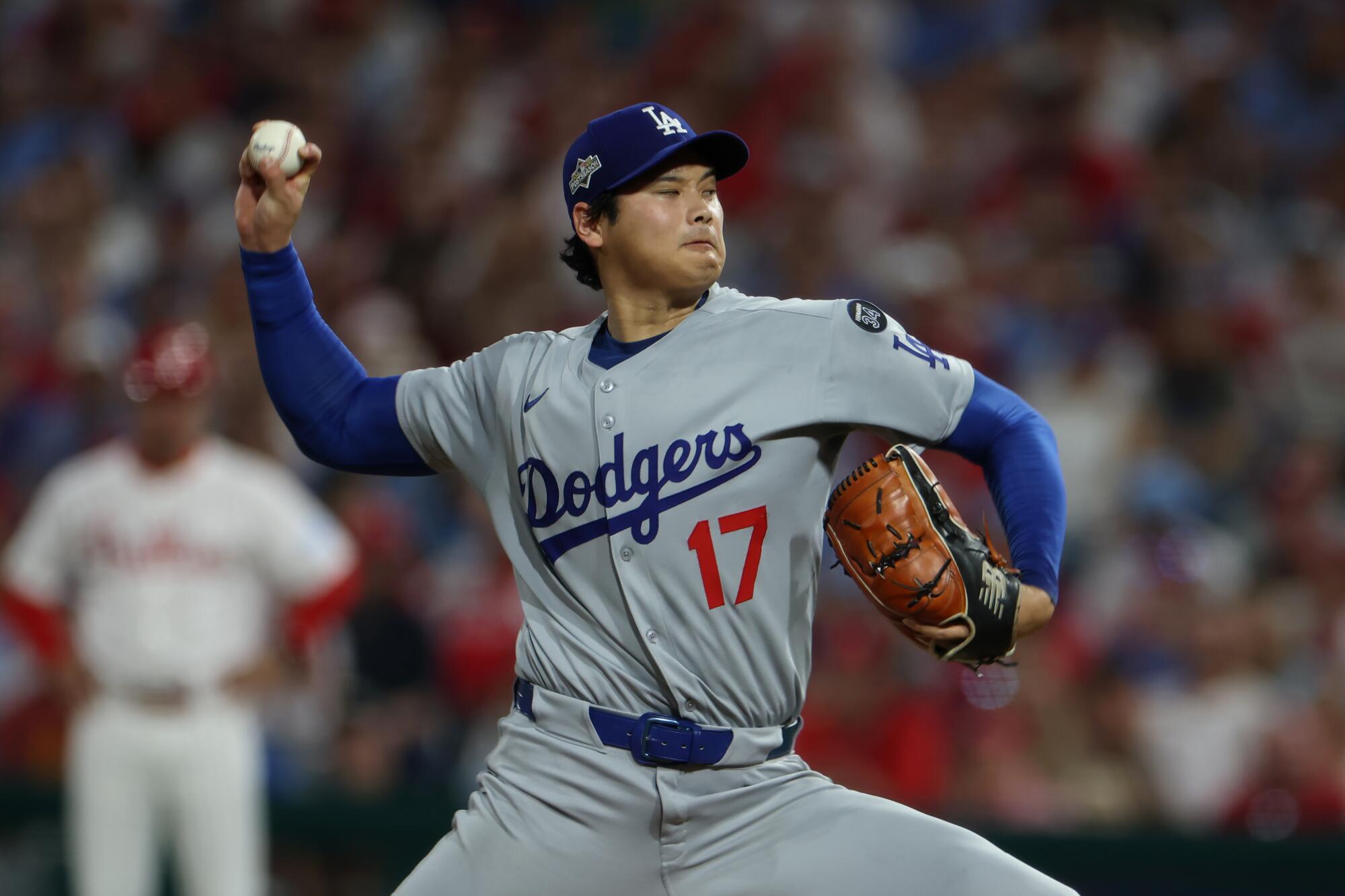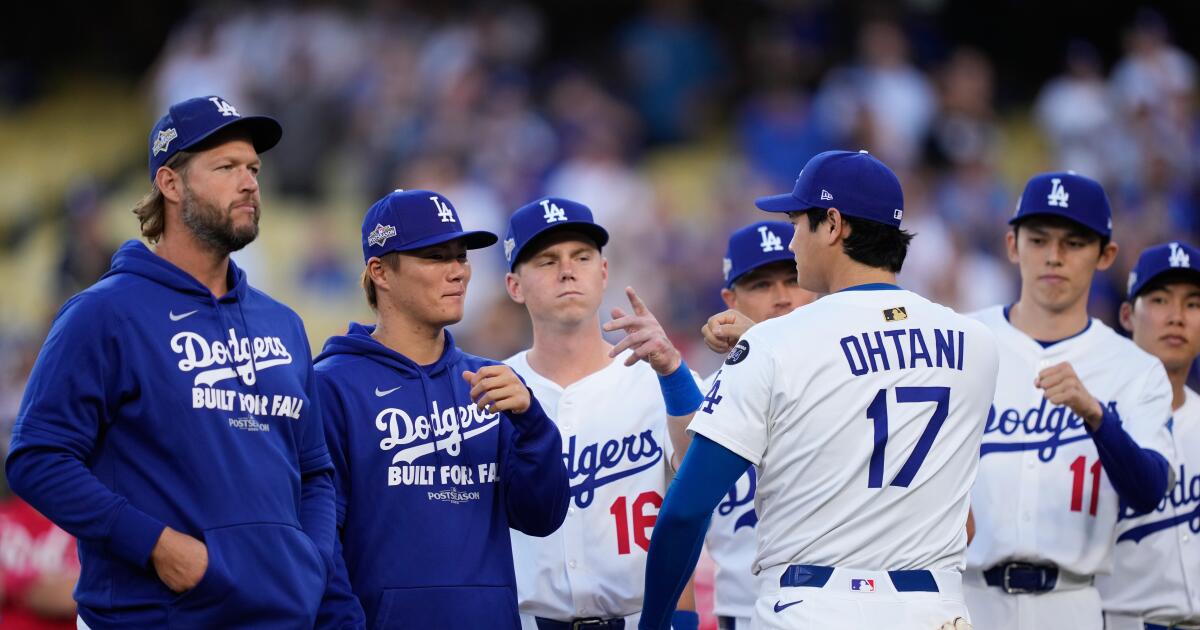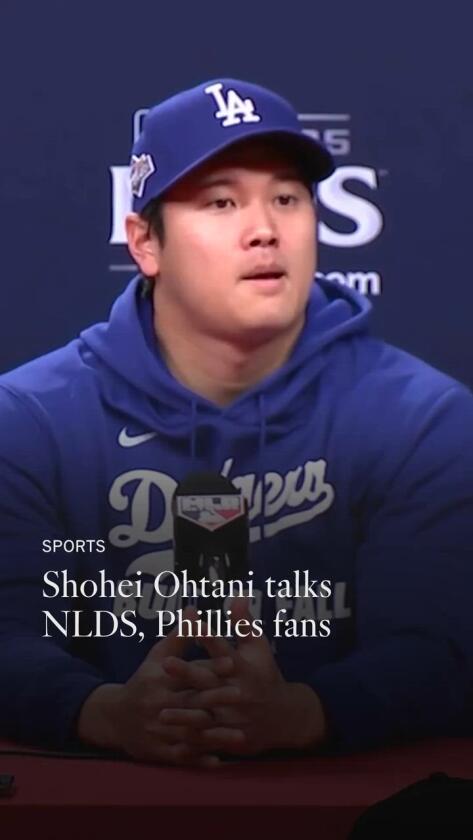Dodgers’ Game 1 NLCS win shows financial might can make things right
MILWAUKEE — The disparity in the payrolls was the focus of the series before the first pitch ever delivered, the handiwork of the manager in charge of the small-market franchise that won more regular season games than any team in baseball.
“I’m sure that most Dodgers players can’t name eight guys on our roster,” joked Pat Murphy of the Milwaukee Brewers.
If the preceding six months were a testament to how a team can win without superstars, the Dodgers’ 2-1 victory in Game 1 of the National League Championship Series was a display of the firepower that can be purchased with a record-breaking $415-million payroll.
The Dodgers won a game in which a confusing play at the center-field wall resulted in an inning-ending double play that cost them a run — and very likely more.
They won a game in which they stranded 11 runners.
They won a game in which the Brewers emptied their top-flight bullpen to secure as many favorable matchups as possible.
The Dodgers won because they had a $162-million first baseman in Freddie Freeman, whose sixth-inning solo home run pushed them in front. They won because they had a $182-million starting pitcher in Blake Snell, who pitched eight scoreless innings. They won because they had a $365-million outfielder-turned-shortstop in Mookie Betts, who drew a bases-loaded walk in the ninth inning.
Talent wins.
The Dodgers can buy as much of it as they want.
The visions of the Brewers’ small-ball offense overcoming the absence of a Freeman or a Betts or a Shohei Ohtani?
In retrospect, how cute.
The thinking of how the Brewers’ pitching depth could triumph over the Dodgers’ individual superiority?
In retrospect, how delusional.
The Dodgers absorbed the Brewers’ best collective shot, and they emerged with a victory that won them control of the best-of-seven series.
Their $325-million co-ace, Yoshinobu Yamamoto, will start Game 2 on Tuesday. Ohtani, their $700-million two-way player, and their $136.5-million No. 4 starter Tyler Glasnow will pitch Games 3 and 4 at Dodger Stadium in some order.
How can the Brewers match that?
Bring on the Seattle Mariners.
Bring on the World Series.
The Brewers’ futile effort to stop the Dodgers on Monday night consisted of them deploying six pitchers in a so-called bullpen game. The assembly line of arms was solid, but Snell was exceptional.
Snell yielded only one baserunner over eighth innings — Caleb Durbin, who singled to lead off the third inning.
Snell picked him off.
Against the team with the lowest chase rate baseball, Snell finished with 10 punchouts.
“This,” Dodgers manager Dave Roberts said, “was pretty special.”
Only when the Dodgers turned to their bullpen in the ninth inning were they in any sort of danger, with Roki Sasaki looking gassed after his three-inning relief appearance against the Philadelphia Phillies in Game 4 of the NL Division Series.
Also of concern was the effect the previous series had on the Dodgers’ most valuable property, Ohtani. In the four games against the Phillies, Ohtani was one for 18 with nine strikeouts.
There was no way of knowing whether Ohtani was out of his mini-slump, as the Brewers elected to challenge him as infrequently as possible.
Facing opener Aaron Ashby, Ohtani drew a walk to start the game. He was walked two other times, both intentionally.
He was hitless in his two other plate appearances, as he flied out to left field in the third inning and grounded out to first base in the seventh. His plate discipline was improved, and his third-inning at-bat against Quinn Priester lasted eight pitches.
“I thought Shohei’s at-bats were great tonight,” Roberts said.
Before the game, president of baseball operations Andrew Friedman pushed back against the perceptionthat Ohtani was even slumping, describing how the Phillies pitched to him in borderline historic terms.
“I think it was the most impressive execution against a hitter I’ve ever seen,” Friedman said.
Perhaps not wanting to create any bulletin-board material for Ohtani, Murphy also described the mini-slump as a reflection of the excellence of Phillies pitchers Cristopher Sánchez, Jesús Luzardo and Ranger Suarez.
“Those guys are really, really good,” Murphy said. “So I don’t consider Ohtani struggling. I don’t.”
Murphy behaved like it, his fear of Ohtani healthy enough to where he walked him intentionally to load the bases in the ninth inning.
The move backfired when Betts walked to push in an insurance run.
Ohtani wasn’t the only big-money player on the team.
